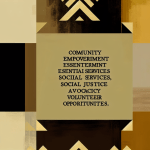Life in a Convent or Monastery: A Journey into Spiritual Solitude
Life in a convent or monastery is a unique experience that embodies a profound commitment to spiritual practice, community life, and service. For many, the idea of living in a religious community brings to mind images of serene surroundings, contemplative silence, and a deep connection to faith. This blog post explores the daily routines, spiritual practices, and the overall life in a convent or monastery, helping readers understand what it truly means to embrace this path.
The Concept of Monastic Life
Monasticism is a religious way of life characterized by the renunciation of worldly pursuits in favor of spiritual work. Individuals who choose to live in a convent or monastery dedicate their lives to prayer, meditation, and community service. While the practices can vary significantly among different faith traditions, the core principles often remain the same: simplicity, humility, and devotion to God.
Different Types of Monastic Communities
There are several types of monastic communities based on different religious traditions. Some of the most common include:
- Christian Monasteries: These communities, including Benedictines, Franciscans, and Cistercians, emphasize a life of prayer, hospitality, and work.
- Convents: Usually inhabited by women, convents focus on similar spiritual practices and community living.
- Buddhist Monasteries: In Buddhism, monks and nuns dedicate their lives to the teachings of the Buddha, engaging in meditation, study, and ethical living.
- Hindu Ashrams: These spiritual communities focus on yoga, meditation, and the study of sacred texts, allowing participants to deepen their connection with the divine.
Understanding these various monastic traditions sheds light on the diversity of life within a convent or monastery.
Daily Life in a Convent or Monastery
Life within a convent or monastery is structured and disciplined, designed to foster spiritual growth and communal harmony. Here’s a typical day in the life of a monk or nun:
Morning Prayer and Meditation
Most monastic communities start the day early, often before dawn. The day begins with morning prayers, sometimes referred to as the Divine Office or Liturgy of the Hours. This communal prayer session helps set the spiritual tone for the day and offers participants an opportunity to reflect and connect with God.
Following the prayers, personal meditation or silent reflection is encouraged. This quiet time allows individuals to ground themselves spiritually and mentally prepare for the day ahead.
Work and Vocation
After morning prayers, the daily schedule often includes work or study. The belief that “work is prayer” is integral to monastic life. Residents may engage in various activities, including:
- Gardening: Cultivating food and flowers not only feeds the community but fosters a connection to the earth.
- Crafts and Art: Many monasteries have a rich tradition of creating religious art, such as iconography or pottery.
- Hospitality: Welcoming guests and offering retreats is essential for sharing their spiritual mission and fostering community.
Monastic work varies widely; some communities may focus more on education or health care. Regardless of their vocation, the work performed is often seen as an expression of their faith.
Communal Meals
Meals in a convent or monastery are typically shared in silence or accompanied by readings. This practice allows for reflection and an opportunity to foster community. Monastic diets are often simple and emphasize healthy, locally-sourced foods, aligning with their values of sustainability and simplicity.
Afternoon Activities and Study
The afternoons may be dedicated to additional prayer, study, or community service. Many monasteries emphasize the importance of lifelong learning — monks and nuns often engage in theological study or attend lectures. This commitment to education helps deepen their understanding of their faith and enhances their ability to serve others.
Evening Prayer and Reflection
As the day comes to a close, evening prayer is usually conducted. Like morning prayers, this time is reserved for gratitude and reflection. Residents reflect on their day, consider their intentions, and seek spiritual nourishment to prepare for rest.
The Role of Silence and Solitude
Silence is a crucial aspect of life in a convent or monastery. Monastics often practice silence to create space for introspection and divine connection. This intentional silence allows for spiritual clarity and a deeper understanding of one’s self and one’s relationship with God.
Solitude also plays a vital role, offering monastics the opportunity to disconnect from the distractions of the world. Engaging in solitude helps deepen their spiritual journeys, allowing for growth and transformation.
The Spiritual Practices
Life in a convent or monastery is steeped in spiritual practices designed to cultivate a deeper relationship with the divine. Some common practices include:
Daily Prayer
Prayer is at the heart of monastic life. From scheduled prayers to spontaneous requests for God’s guidance, prayer serves as a continuous way to connect with the divine.
Meditation
Monastics often engage in meditation as a way to quiet the mind and focus on spiritual truths. This practice can take various forms, including centering prayer, guided meditation, or contemplative reading of Scripture.
Study of Sacred Texts
Studying religious texts is vital for spiritual understanding and growth. Monasteries often have libraries filled with important works that residents engage with for theological insight.
Acts of Service
Service to others is an essential component of monastic life. Many monastic communities operate food banks, shelters, or educational programs, extending their commitment to love and serve their neighbors.
The Community Aspect
Life in a convent or monastery is not solely about individual spirituality; it is also about community. Living in close quarters with others fosters deep relationships and a sense of belonging. Here’s how community life is woven into the fabric of monastic existence:
Shared Purpose and Goals
All members of the community commit to shared values and goals. This collective mission creates an environment of support and encouragement as residents work toward the same spiritual aspirations.
Conflict Resolution
Like any community, conflicts may arise in monastic life. Communities typically have established processes for conflict resolution, focusing on love, forgiveness, and reconciliation. This focus on spiritual principles helps maintain harmony and understanding.
Celebrations and Rituals
Celebrating special occasions and rituals is vital for fostering community bonds. Whether through feast days, seasonal celebrations, or spiritual milestones, these events reinforce unity and joy among residents.
The Challenges of Monastic Life
While the life in a convent or monastery is often romanticized, it is not without challenges. Adjusting to a new way of life can be difficult, especially for newcomers. Some common challenges include:
A Life of Poverty
Monastics often take vows of poverty, which can be difficult in a materialistic society. Living simply and sharing all possessions can be a significant adjustment.
Isolation from the World
While many appreciate the solitude of monastic life, others may struggle with feelings of isolation or disconnection from their previous social circles.
Rigorous Routine
The disciplined lifestyle can be demanding. Following a structured schedule may require adjusting personal habits and routines.
Conclusion: Embracing a Life of Devotion
Life in a convent or monastery is a journey into spiritual solitude, dedicated to prayer, community, and service. While it has its challenges, the rewards of such a life include deep spiritual fulfillment, profound connections with others, and the joy of serving the divine.
Whether one is drawn to a religious community for healing, growth, or a deeper understanding of faith, the lessons learned within the walls of a convent or monastery can be transformative. For those seeking a life filled with purpose and meaning, embracing a monastic path may lead to a deeper connection with God and a more profound understanding of life itself.
If you are considering this path, take the time to research different communities, visit, and pray for guidance. Discovering the richness of life in a convent or monastery may just lead you to find your spiritual home.




